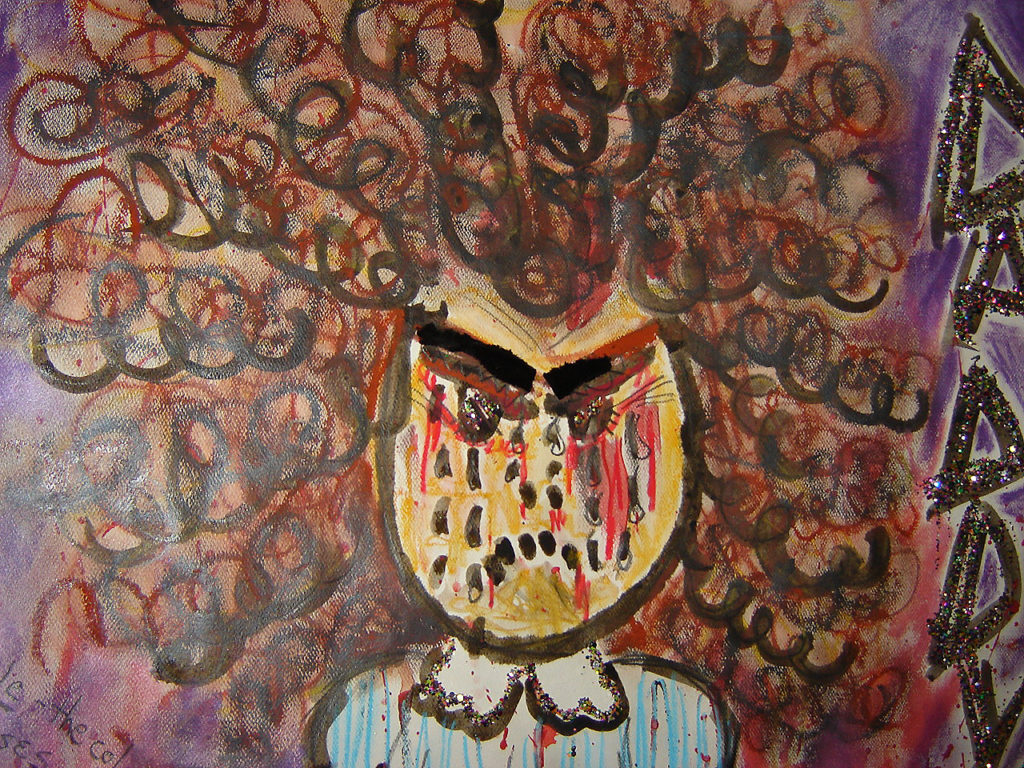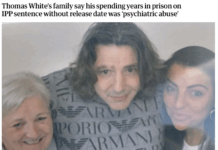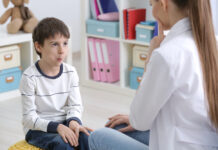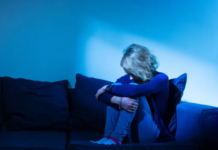A new study, published in Early Intervention in Psychiatry, investigates the relationship between early trauma exposure and the development of psychotic symptoms in children between 7-18 years old. The results indicate a strong association between trauma and the development of psychotic disorders (PDs) in childhood.
“While previous research has established a robust connection between trauma and PDs in older adolescents and adults, our findings suggest that this relationship extends to children and adolescents with early-onset psychosis and psychotic-like symptoms,” write researchers Morelli et al.

The development of psychosis is hypothesized to be connected to the combination of environmental exposures, such as childhood trauma and abuse, and genetic vulnerability. The relationship between early trauma and the development of psychotic disorders in adulthood has been corroborated in numerous studies, yet few studies have investigated this dynamic in children.
Research in this area includes those diagnosed with psychotic disorders as well as individuals at clinical high risk (CHR) for psychosis, categorized by “attenuated positive psychotic symptoms that are below the diagnostic threshold (e.g., perceptual disturbances, magical thinking, heightened suspiciousness).” These populations endure reportedly higher rates of childhood trauma than those identified as “psychologically healthy.” Additionally, CHR individuals who have experienced trauma have been associated with “more severe psychotic symptoms, as well as an increased likelihood of conversion to psychosis.”
By assessing a potential temporal connection between the experience with trauma and onset of symptoms, Morelli and colleagues seek to delineate the impact of trauma on children with early psychotic symptoms and adults experiencing later onsets. In addition to assessing the severity of prodromal symptoms in relation to trauma exposure in CHR youth, the study aims to “assess potentially traumatic events (PTEs) in typically developing (TD) youth, youth at CHR, and youth diagnosed with a PDs between 7 and 18 years of age.”
The study included 87 youth (21 TD, 38 CHR, and 28 PD) between the ages of 7-18, recruited based on their psychotic-like experiences. Trauma history was not included in the recruitment phase. The Schedule for Affective Disorders and Schizophrenia for School-Age Children-Present and Lifetime Version (KSADS-PL) was used for all participants in a semi-structured interview format. The post-traumatic stress disorder module of the KSADS-PL asks about PTEs and additional trauma information. To assess prodromal symptoms, the SIPS was employed. The participants gave informed assent, and their parents provided informed consent.
“Participants reporting a history of PTEs were significantly overrepresented in the CHR and PD groups relative to the TD group,” the researchers report. Notably, CHR and PD participants reported similar rates, frequencies, and types of trauma, and more “direct, interpersonal forms of PTEs” like sexual abuse, physical abuse, and victim of a violent crime, as opposed to TD participants.
The researchers note that though a larger sample size is warranted to represent specific types of trauma in relation to risk of psychotic symptoms. Still, these results “align with previous work highlighting the strong association between interpersonal traumatic events and the development of psychotic symptoms, particularly among victims who maintain a close relationship with the perpetrator.”
Concerning the results of prodromal symptoms in CHR participants, there was no difference in severity of symptoms between those with and without a history of PTEs. Morelli et al. attribute this non-significant finding to the potential that “early trauma may not impact the intensity of one’s prodromal psychotic symptoms until later adolescence or early adulthood.” They also consider that early-onset psychosis might mean a more severe clinical presentation, whose symptoms potentially overshadow a connection with trauma. Additionally, they acknowledge that the small sample size may be less capable of detecting significant differences.
The study’s small sample size also precluded access to information on race/ethnicity and other demographic variables. Another limitation is the study’s cross-sectional design, which misses information on any causal relationship between PTEs and psychosis. The design also hindered the researchers from assessing the temporal relationship of PTEs and the onset of psychotic symptoms. The researchers call for more research studies “to replicate these findings using larger samples, more detailed trauma measures, and longitudinal design.”
“Trauma alone is not hypothesized to predict PD or symptoms. Rather, trauma exposure is posited to create an initial level of heightened vulnerability for later psychopathology, including but not limited to psychosis,” the researchers write. “As such, addressing childhood trauma in individuals at high-risk for-but who have not yet developed-psychosis becomes an obvious critical avenue to pursue.”
****
Morelli, N., Fogler, J., Tembulkar, S., Graber, K., Lincoln, S. H., Bosquet Enlow, M., Gonzalez-Heydrich, J., D’Angelo E. J. (2018) Potentially traumatic events in youth with and at clinical high risk for psychosis. Early Intervention in Psychiatry. doi: 10.1111/eip.12565 (Link)















I find this kind of study a little troubling for a number of reasons. First they are conducting research that would support conclusions they have previously arrived at (childhood trauma is the root of adult “psychosis”). Where are drawing foregone conclusions not a matter of bias? Secondly, here is another excuse for the pre-schizophrenic prodromal label. Want a schizophrenic adult? Label a child schizophrenic prone. ABC, what could be more difficult? Perhaps resisting the trend and countering medicalization by not labeling children and adolescents at all.
Report comment
“The development of psychosis is hypothesized to be connected to the combination of environmental exposures, such as childhood trauma and abuse, and genetic vulnerability.” This hypothesis is incorrect.
The reason there is a relationship between “psychosis” and child abuse is because there is NO way for ANY “mental health professional” to bill ANY insurance company for helping ANY child abuse victim, because child abuse is classified in the DSM as a “V Code.”
https://www.psychologytoday.com/us/blog/your-child-does-not-have-bipolar-disorder/201402/dsm-5-and-child-neglect-and-abuse-1
And “V Codes” “are non-reimbursable by insurance companies.” This “flaw” in the DSM/insurance reimbursement laws has resulted in the “mental health professionals” misdiagnosing millions of child abuse victims, with the billable DSM disorders, including the “psychotic” disorders.
Today, “the prevalence of childhood trauma exposure within borderline personality disorder patients has been evidenced to be as high as 92% (Yen et al., 2002). Within individuals diagnosed with psychotic or affective disorders, it reaches 82% (Larsson et al., 2012).”
This means that over 80% of all those labeled as “depressed,” with “anxiety,” “PTSD,” “bipolar,” or any of the “psychotic” disorders” are actually child abuse victims, who were mislabeled with these DSM disorders, so the “mental health professionals” could bill the insurance companies for “helping” these child abuse victims.
One of the problems with mislabeling millions of child abuse victims with these other DSM disorders is that child abuse is a crime, not a brain disease, so drugs won’t help. And the treatments for these DSM disorders, like the antidepressants and/or antipsychotics (aka neuroleptics), can actually create the symptoms of the disorders.
The antidepressants can create the “bipolar” symptoms, not to mention they increase suicides and violence, as well as causing many other problems.
https://www.alternet.org/story/146659/are_prozac_and_other_psychiatric_drugs_causing_the_astonishing_rise_of_mental_illness_in_america
And the antidepressants and/or antipsychotics can create “psychosis,” one of the positive symptoms of “schizophrenia,” via anticholinergic toxidrome. The neuroleptics can also create what appears to the “mental health professionals” to be the negative symptoms of “schizophrenia” too, via NIDS.
https://en.wikipedia.org/wiki/Toxidrome
https://en.wikipedia.org/wiki/Neuroleptic-induced_deficit_syndrome
But since neither of these medically known psychiatric drug induced syndrome are listed in the DSM, and because the symptoms of these syndrome mimic the symptoms of the billable DSM disorders, these psychiatric drug induced syndrome are ALWAYS misdiagnosed as one of the billable DSM disorders, because the “mental health professionals” want to be paid. But this, of course, results in more iatrogenic harm of these millions of misdiagnosed child abuse victims.
The head of the National Institute of Mental Health confessed to the “invalidity,” of all the DSM disorders in 2013, likely in part because there is no proof of a “genetic” etiology for any of the DSM disorders. WAKE UP!
https://www.nimh.nih.gov/about/directors/thomas-insel/blog/2013/transforming-diagnosis.shtml
All this is evidence that the “development of psychosis” can provably be “connected to the combination of environmental exposures, such as childhood trauma and abuse” being misdiagnosed on a massive scale as the billable DSM disorders, and the iatrogenic harm of the psychiatric drugs, as opposed to a “genetic vulnerability.”
There is another societal problem that was created due to today’s “mental health professionals,” massive in scale, iatrogenic harm and silencing of millions of child abuse victims. This systemic “mental health industry” pedophilia covering up problem also functions to aid, abet, and empower the child abusers. Resulting in our society now being ruled by “satanic pedophiles.”
https://realitieswatch.com/putin-west-controlled-satanic-pedophiles/
I recommend the DSM either be thrown away altogether, which I believe it should be, OR be changed so that helping child abuse victims becomes a billable service for the “mental health professionals.” Currently it is NOT a billable service. The DSM5 should be changed back to what the DSM-IV-TR stated, regarding the impropriety of misdiagnosing the adverse effects of the antidepressants as “bipolar.” That should also include the similar problem with the ADHD drugs. Because such misdiagnoses are iatrogenic, not “genetic,” pathways to a “bipolar” diagnosis, and the “mental health professionals” claim to be looking for “genetic” illnesses. I also recommend adding Neuroleptic Induced Deficit Syndrome and Anticholinergic Toxidrome into the DSM, so the “mental health professionals” will garner some insight into the medically known adverse effects of their neurotoxic drugs.
Please stop harming our “weakest members,” “mental health professionals.” “A society will be judged on the basis of how it treats its weakest members.” But what’s good is you now know the primary etiology of both “bipolar” and “schizophrenia” is of an iatrogenic, not “genetic,” etiology.
Report comment
By the way, when a loving, but heartbroken, mother keeps her child – who was sexually assaulted at the age of 3 and 4 by what she later learned were Bohemian Grove attending, child sacrificing, rumored to be cocaine dealing, apparently Baal worshipping satanists, who were on the school board of her child’s school and were also hanging out in a Lutheran church for “SO-CI-AL reasons.” When she keeps her child away from the many “mental health professionals” who wanted to get their hands on her well behaved and healing child, and drug him.
That child can go from suffering from all the common symptoms of child abuse, including medical evidence of the abuse and going from a “school for gifted children” to remedial reading in the public school in first grade, after the abuse.
To getting 100% on his state standardized tests by 8th grade. At which point, of course, the delusional public school social workers, who apparently believe any child outside the bell curve has a pathological brain disease, wanted to get their grubby little hands on my healing, and well behaved, child. Time for private school again.
That child did graduate from high school as the valedictorian. And he graduated from university with highest honors (Phi Beta Kappa), as well as winning a psychology department award. It was almost embarrassing listening to my son’s psychology professors gush over how psychologically wonderful my child was at his graduation last spring.
You “mental health professionals” who are mislabeling millions of child abuse victims with your DSM labels, like “psychosis,” freely brag, and take away the hope of, those mislabeled child abuse victims by fraudulently claiming they have “lifelong, incurable, genetic” diseases, and by insisting they will NEVER heal.
You are wrong and this behavior is morally repugnant. With love, mutual respect, and encouragement – as opposed to psychiatric stigmatization, lies, and neurotoxic drugs – child abuse victims can heal and succeed.
It is highly disingenuous for today’s “mental health professionals” to now be trying to explain away your massive in scope crimes against child abuse victims, by implying that child abuse causes your scientifically “invalid” DSM disorders.
Please fix the problems within your industries, and confess that your faustian “dirty little secret of the two original educated professionals” promise to cover up the “zipper troubles” of the religious leaders and their wealthy was a bad idea.
Distress caused by child abuse is not a “lifelong, incurable, genetic mental disorder,” child abuse is a crime. Drugs DO NOT “cure” child abuse victims of legitimate distress caused by a crime. Our society does NOT benefit from having a multibillion dollar, primarily child abuse covering up, group of DSM deluded “mental health” industries. WAKE UP!
Report comment
“Rather, trauma exposure is posited to create an initial level of heightened vulnerability for later psychopathology, including but not limited to psychosis…”
Wow, way to make it sound as complex as possible! Why not say, “Being traumatized makes it very likely you’ll get a later DSM diagnosis.” Or better yet, “Trauma is bad for you.”
With Someone Else’s great contribution, we see that over 80% of “psychotic” adults have been traumatized. Compare this with the fact that the most optimistic genetic studies have showed less than 15% of “mentally ill” adults have any correlation with even a wide range of genetic markers (over 100, as I recall). Seems like we’re wasting a lot of time looking at genetics, when the most obvious “contributing factor” is childhood trauma.
Report comment
Thank you for the compliment, Steve. And I agree with both you and Thomas Insel, that continuing to fund research into the “genetics” of the made up DSM “mental illnesses,” when the mainstream medical community already knows the symptoms of today’s DSM disorders, including “psychosis” (via anticholinergic toxidrome), can be created with the psychiatric drugs, is insanely stupid.
But my point is the DSM based “mental health system” is the problem. It’s set up so that today’s “mental health professionals” may not actually help child abuse victims, unless they first misdiagnose them with one of the billable DSM disorders. Billable DSM disorders which all require drugging these child abuse victims with the psychiatric drugs, which are medically known to create the symptoms of the DSM disorders.
And today’s “mental health professionals” should absolutely not be trying to blame the child abuse victims they’ve been iatrogenically harming on a massive scale for profit, and child abuse itself, for creating their “invalid” DSM disorders.
That is untrue. Child abuse victims can heal and excel when quickly taken away from the abusers, given a safe living environment, kept away from the “mental health professionals” who want to drug them, and when they are given love, mutual respect, and encouragement. I hope.
At a minimum, child abuse victims can heal and succeed, and/or fool the brightest of the psychological professors. I still pray for my child. I pray my child will some day work to make the appropriate changes in today’s satanic, primarily pedophilia covering up, “mental health industry.”
He is interested in public policy change of today’s satanic, primarily pedophilia covering up “mental health system.” So I hope he’s not just interested in maintaining the BS of today’s DSM based, drug all the child abuse victims, “mental health system.” He knows about the iatrogenic harm the psychiatric drugs do.
I’ve tried to teach my children well. Pray to God it sunk in, and we may collectively bring about a better society in time.
Report comment